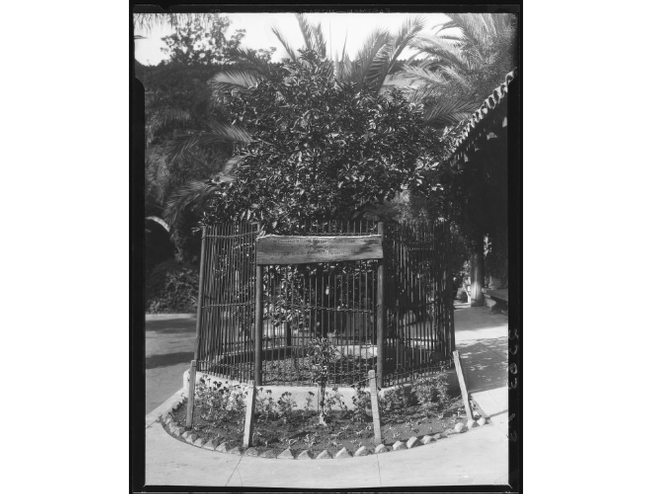Riverside Washington Navel gets additional protection
The city of Riverside is taking steps to protect a 143-year-old Washington Navel orange tree - the tree that parented most navel oranges alive today, reported the Riverside Press-Enterprise.
According to legend, the seedless and sweet Washington navel was an accidental mutant that appeared on the grounds of a Brazil monastery in the early 1800s. Tree clones were sent to USDA in Washington, D.C., and from there acquired by Eliza Tibbets, who tended the trees at her home in Riverside.
This month, city workers removed two trees that were planted near the iconic navel orange - a Marsh Grapefruit and another navel, which was planted in the 1940s and doesn't have the historical value. They have built a steel structure over the Washington Navel to support a transparent screen that will keep out Asian citrus psyllid, an invasive pest that spreads the devastating huanglongbing virus in citrus.
The measures to protect the tree were planned by a team that includes scientists from UC Riverside, the Citrus Research Board and the USDA, the article said.
For more information on the photo above, see visit this UCLA Library page.


